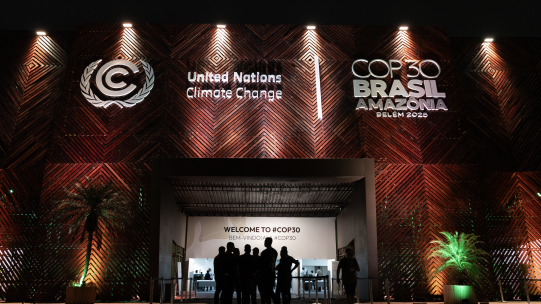Key takeaways from COP29
Read more

COP29 concluded recently in Baku, Azerbaijan. With mixed results, the conference sought to mobilize and align private and public finance to support ambitious climate goals and find agreement on many other critical issues.
At the conclusion of COP29, UN Secretary-General António Guterres noted, “I had hoped for a more ambitious outcome – on both finance and mitigation – to meet the great challenge we face. But this agreement provides a base on which to build.”
Read on about key takeaways, achievements and challenges stemming from COP29.

Key Takeaways:
- With temperatures rising and extreme weather increasing, we still need much more significant commitments and actions for scalable public-private partnerships to mobilize the trillions of dollars required to finance the transition to low-carbon economies
- As the first-ever “Finance COP,” COP29 focused on the operationalization of carbon markets and garnering more financial security across a variety of sectors
- New climate action plans for countries called Nationally Determined Contributions (NDCs) are pivotal to providing countries with region-specific targets to aim for promoting environmental benefits like reducing the amount of greenhouse gases
- With bankable, investible projects as a key part of NDCs, the private sector is already involved in the NDCs process and they must continue to engage
- There are opportunities for the private sector to contribute to the ongoing work of the UN Framework Convention on Climate Change (UNFCCC) and Member States
- Technology development and transfer play a key role in climate policy implementation
- Businesses and participants of the UN Global Compact are creating dialogue with leaders at the forefront of climate issues and will continue to help drive actions
Key COP29 Achievements
- A new climate finance goal for 2035 was established, increasing from $100 to $300 billion per year to help countries to protect their people and economies against climate disasters and share in the benefits of the clean energy boom
- With this increased commitment, there was an emphasis on developed countries’ financial contributions and what can be attained
- COP29 also reached an agreement on carbon markets, creating pathways for sustainable business action; however, many details still need to be worked out
- Attendees committed to operationalizing a new loss and damage fund with $800 million pledged to aid in adaptation efforts
- By February 2025, all countries are required to submit new national climate plans, or NDCs, and the push is on for ambitious, investable NDCs that include the private sector
Outstanding Challenges
- Although this new finance goal is a large leap from the previous annual contributions ($100 billion now to $300 billion), it falls far short of the trillions of dollars needed for most countries to close the gap
- Accountability must be a centrepiece of climate finance, ensuring that pledges are honoured in full, funds are delivered on time and resources are directed toward the communities most in need
- The Adaptation fund, created in 2001 to finance concrete adaptation projects and programmes in countries particularly vulnerable to the adverse effects of climate change, remains severely underfunded, disproportionately affecting developing countries and Small Island Developing States
- Transitioning from fossil fuels needs immediate action, and the UN Global Compact is working with companies on a just transition

Despite the challenges, the UN Global Compact is eager to continue the momentum from COP29 to work with the private sector to advance climate ambition.
Climate damage and extreme weather events are accelerating and intensifying globally, and no country is spared. Businesses and Governments must act—discussions are not enough. In the face of the unprecedented damages caused by the climate crisis, the cost of inaction has never been more evident.
Read more about the ways the UN Global Compact works on Climate and join the commitment to action.


